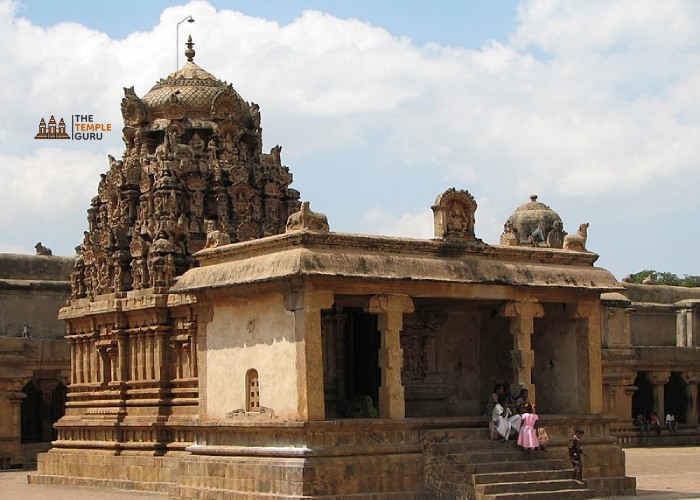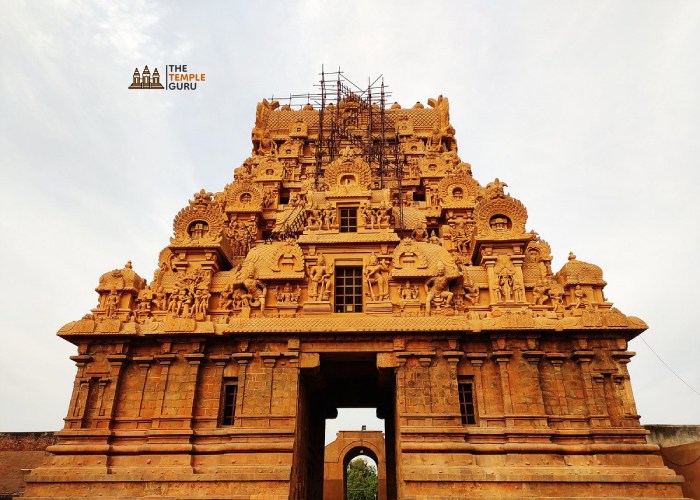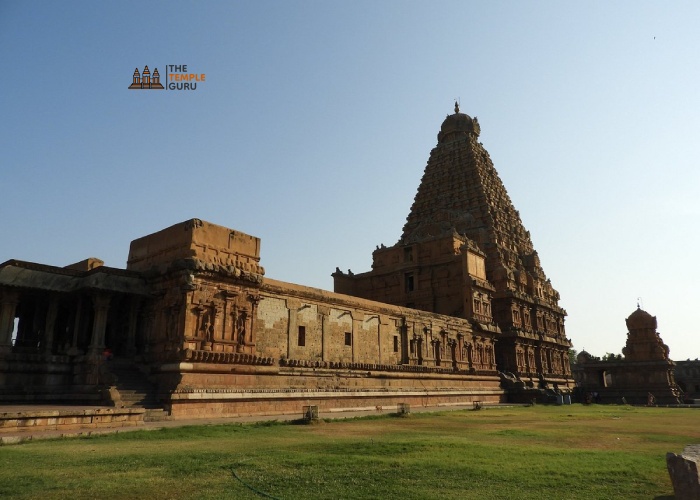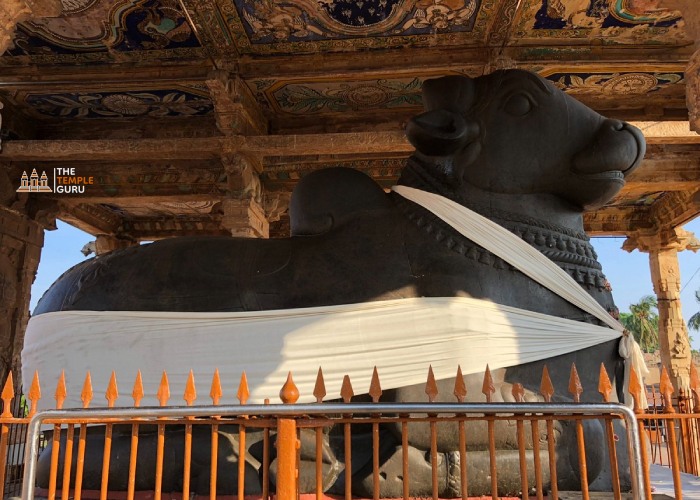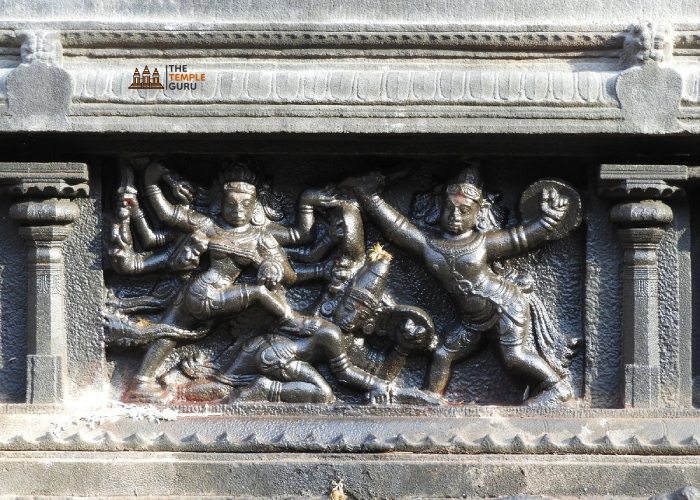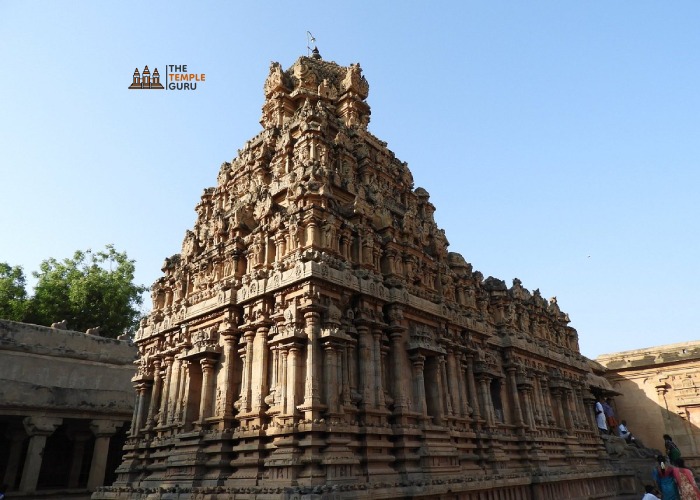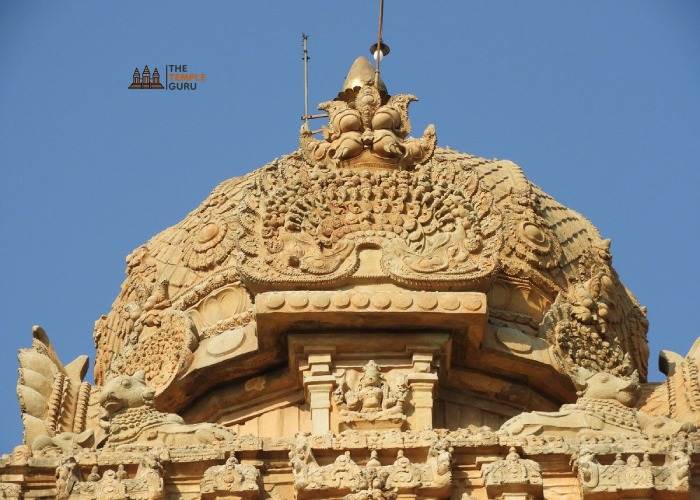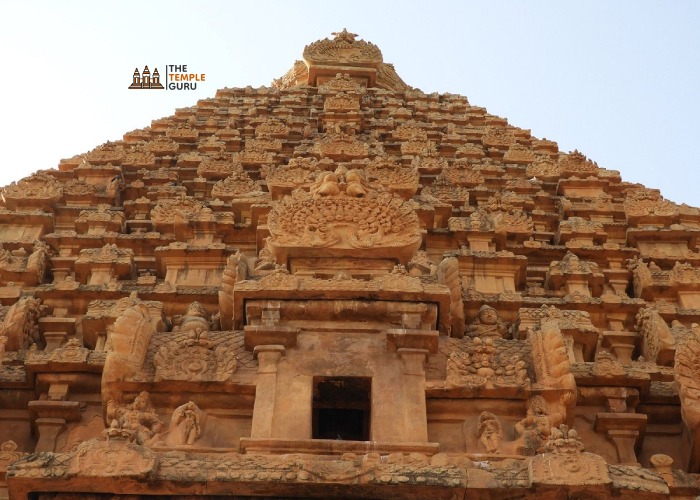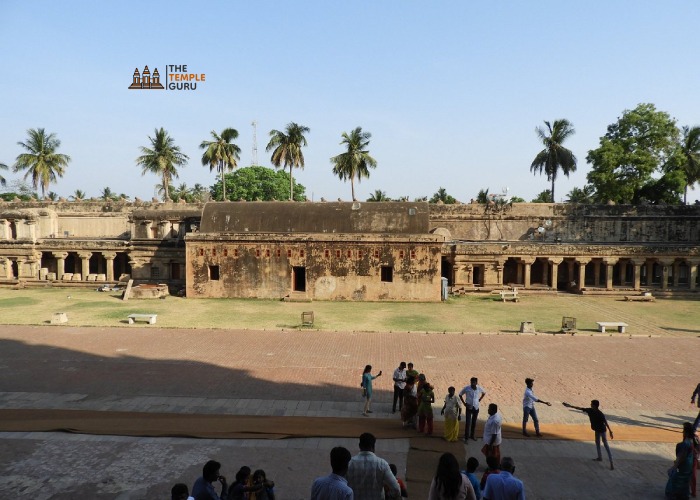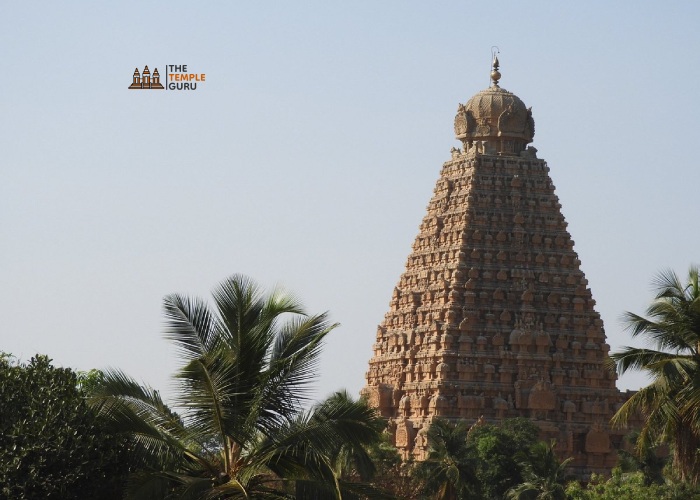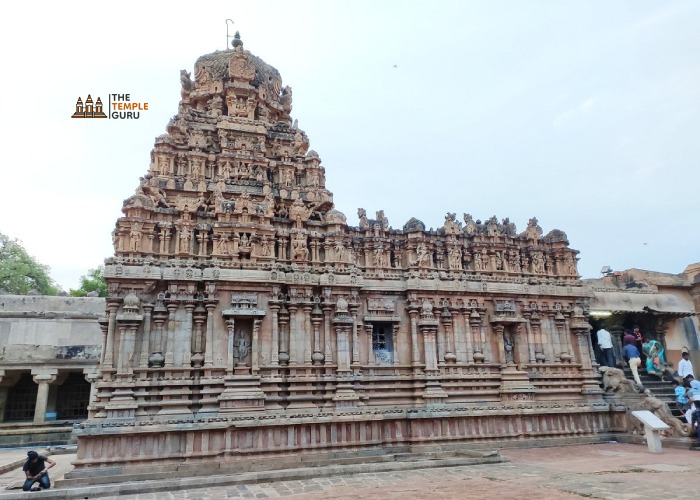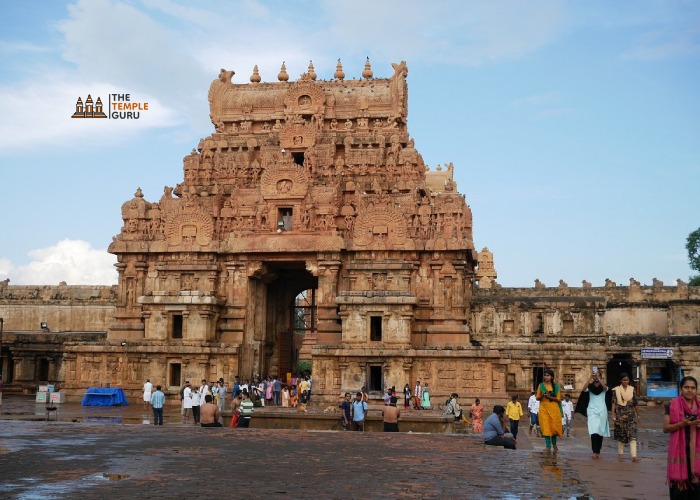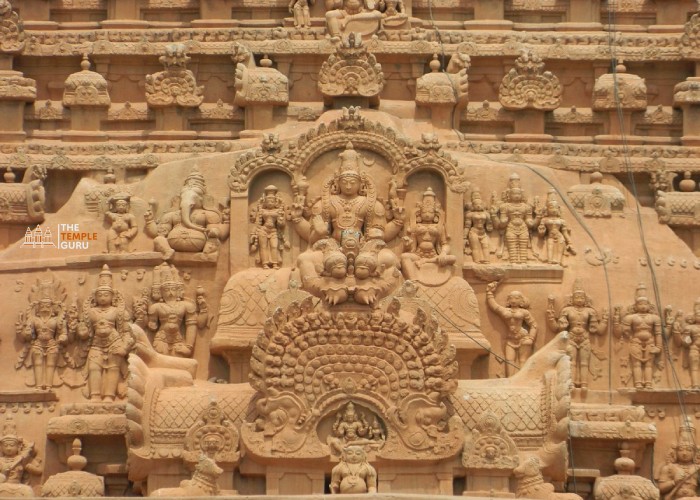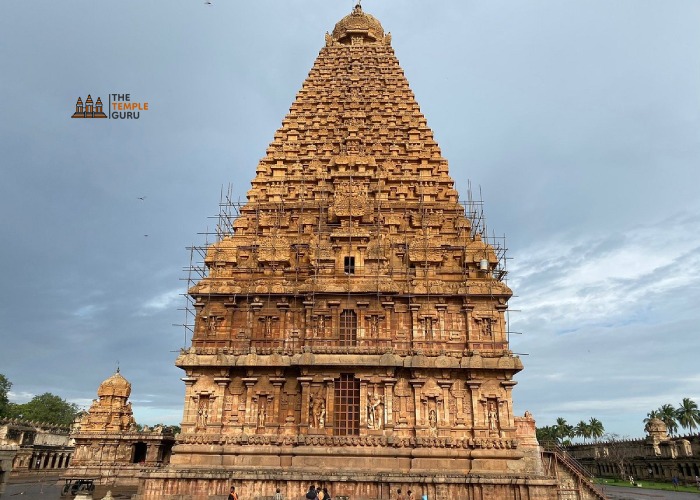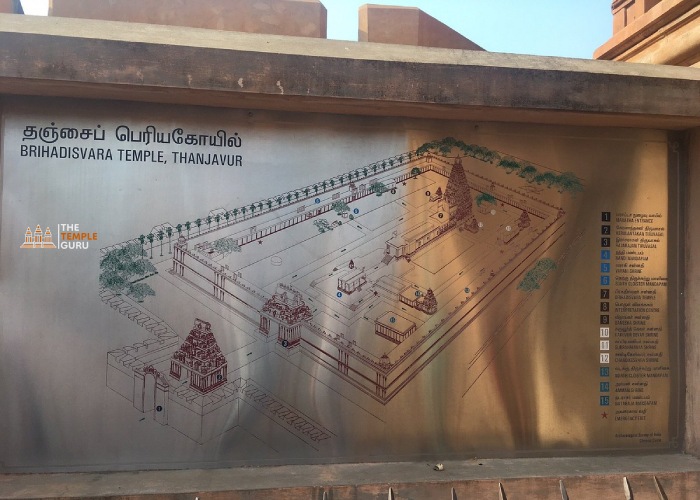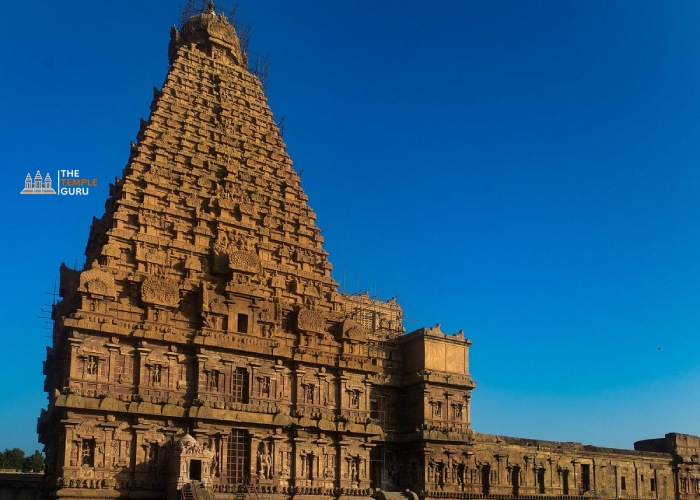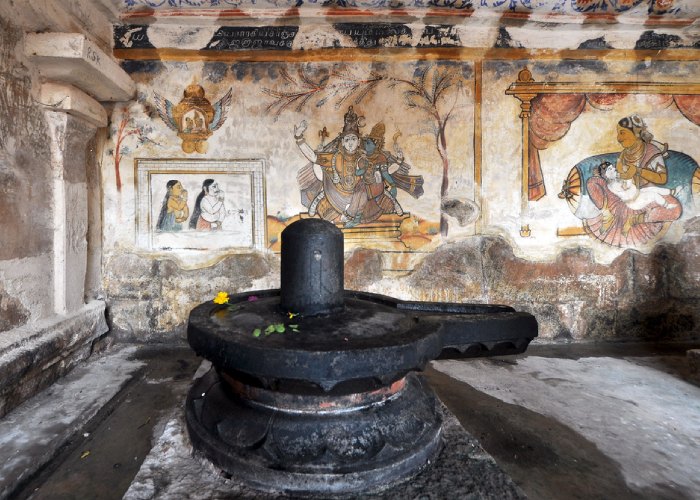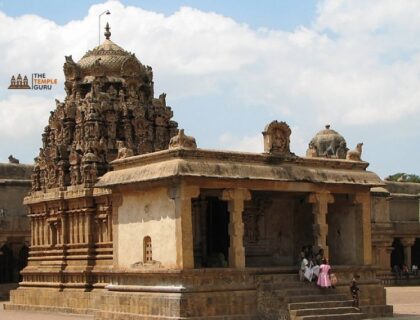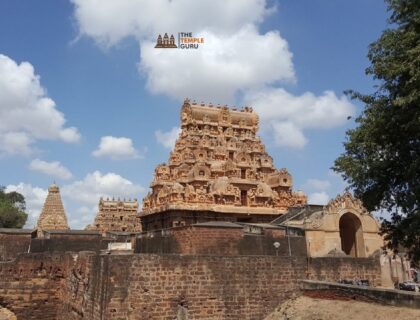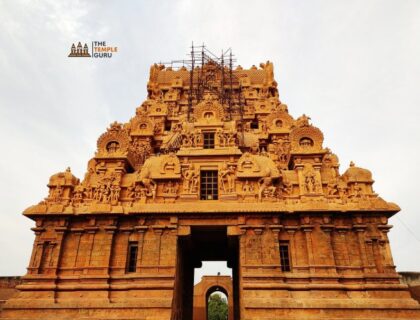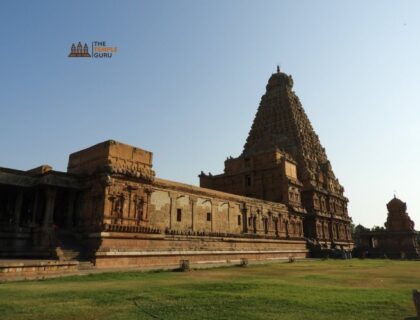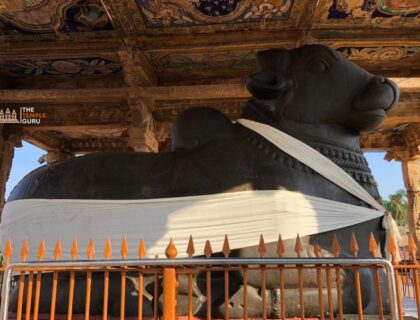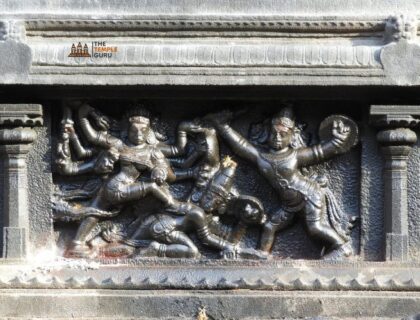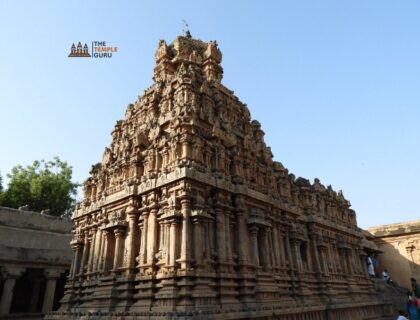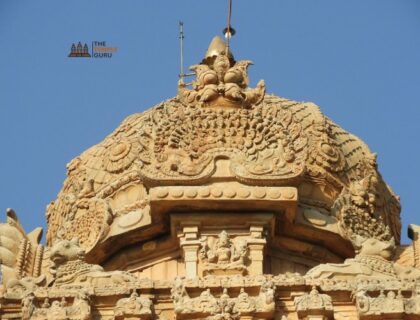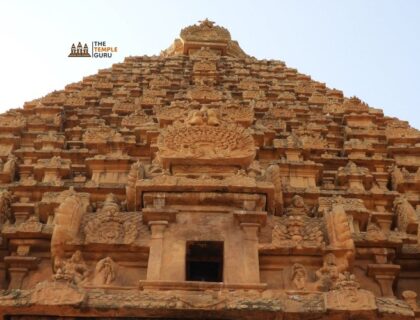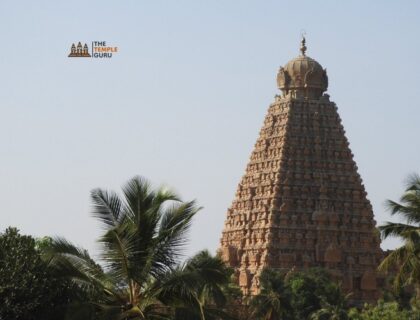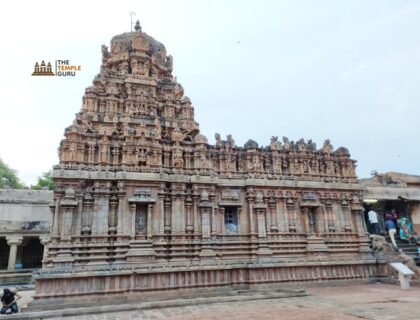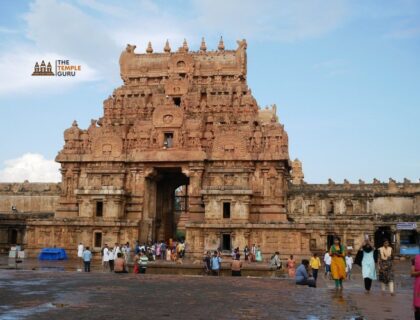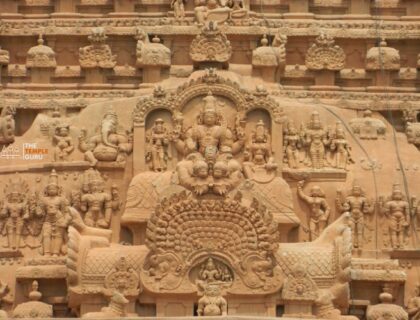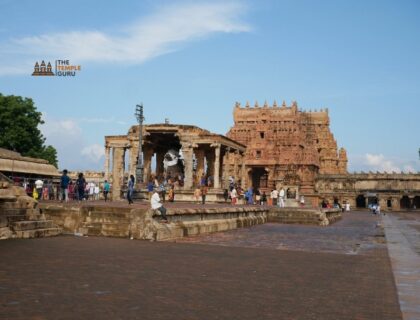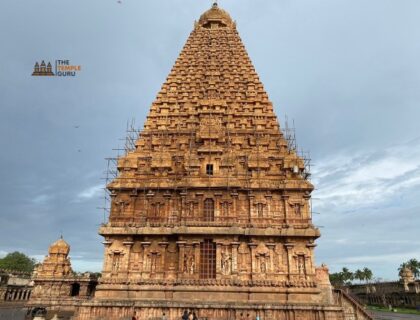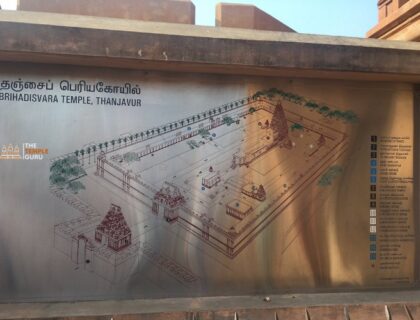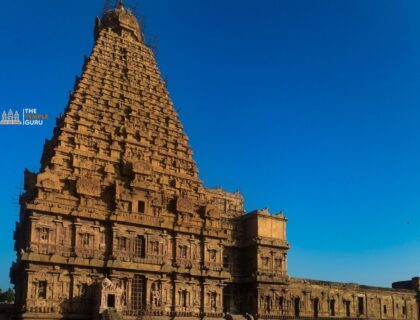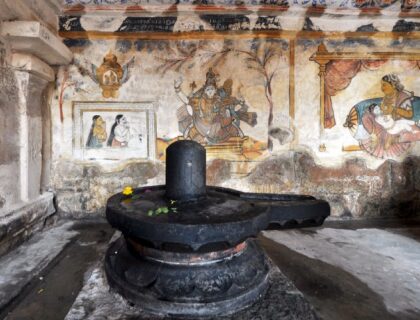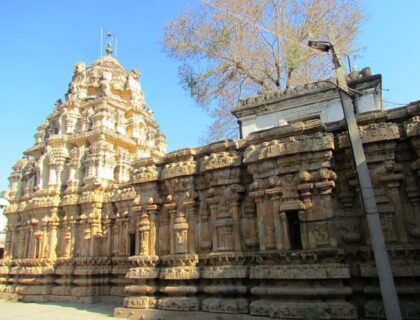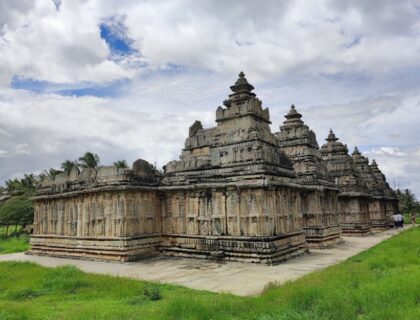Brihadeeswara Temple Thanjavur
UNESCO World Heritage Site, The Brihadeeswar Temple Thanjavur is a well-known ancient Hindu temple in Thanjavur, Tamil Nadu, India. It is one of South India’s most important temples in terms of architecture and culture. This temple is also known as Peruvudaiyar Kovil or Rajarajeswaram Temple in South India.
The Brihadeeswara Temple was constructed in the 11th century during the Chola dynasty, specifically by Emperor Raja Raja I, also known as Raja Raja Chola I. The temple’s construction began in 1003 AD and was completed in 1010 AD. The temple is dedicated to Lord Shiva and is an excellent example of Dravidian architecture.
Special Significance of Brihadeeswara Temple
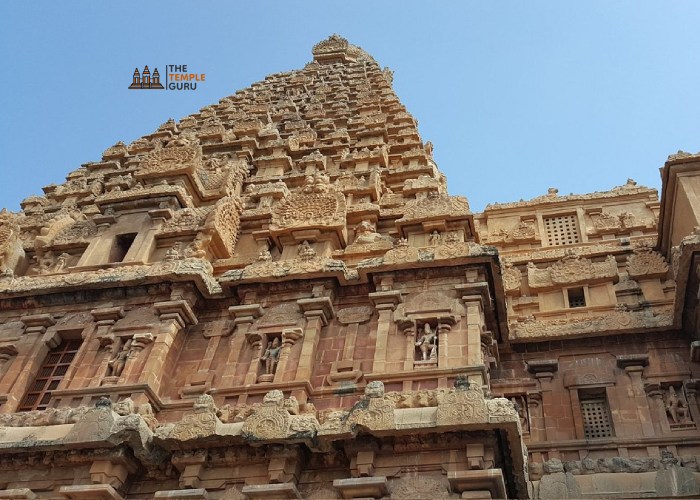
The original monuments of this 11th-century temple were built around a moat. It included the gopura, the main temple, and its massive tower, as well as inscriptions, frescoes, and sculptures primarily related to Shaivism, but also Vaishnavism and Shaktism. The temple has been damaged throughout its history, and some artwork is now missing. In the centuries that followed, more mandapams and monuments were built. The temple is now surrounded by fortified walls built after the 16th century.
The Vimana tower above the shrine, made of granite, is one of the tallest in South India. The temple features a massive collonaded corridor and one of India’s largest Shiva lingams. It is also well-known for the high quality of its sculpture, as well as being the location where the brass Nataraja, Shiva as the Lord of Dance, was commissioned in the 11th century. Nandi, Parvati, Murugan, Vinayagar, Sabhapati, Dakshinamurti, Chandikeshwar, Varahi, Thiyagarajar of Thiruvarur, Siddhar Karuvoorar, and other deities are honoured at the complex. The temple is a popular tourist destination in Tamil Nadu.
History of Brihadeeswara Temple
From the fifth to the ninth century, a range of Dravidian temple styles emerged, as seen in Aihole, Badami, and Pattadakal, and then with the Pallava era, as seen in Mamallapuram and other monuments. Following that, between 850 and 1280, the Cholas emerged as the dominant dynasty. During the early Chola period, the emphasis was on securing their geopolitical borders rather than on architecture.
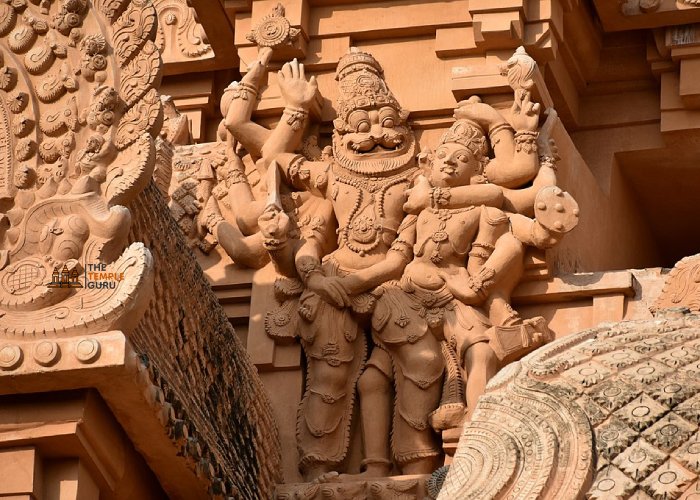
Within the Chola empire in the tenth century, features such as multifaceted columns with projecting square capitals emerged. According to George Michell, this marked the beginning of the new Chola style. The Chola king Rajaraja I built the Brihadeshwara temple between 1003 and 1010 in this South Indian style, which is most fully realized in scale and detail.
The main temple and gopurams date from the early 11th century. Over the next 1,000 years, the temple underwent additions, renovations, and repairs. Raids and wars, particularly between Muslim Sultans in control of Madurai and Hindu kings in control of Thanjavur, wreaked havoc. Hindu dynasties that regained control repaired these. In some cases, the rulers attempted to restore the temple’s faded paintings by commissioning new murals over the old ones.
In other cases, they funded the construction of shrines. The important shrines of Kartikeya (Murugan), Parvati (Amman), and Nandi date from the 16th and 17th centuries, respectively. Likewise, the Dakshinamurti shrine was constructed later. Tanjore’s Marathas kept it in good condition.
Architecture of Brihadeeswara Temple
The temple consists of an entrance tower followed by the main temple complex on a 33,000-square-foot plot. The temple’s interior begins with a large Nandi mandapa, a 12-foot tall monolithic idol with intricately carved Nandi Mandapa. Brihadeeswara Temple’s main shrine has an amazing structure with a large mandapa followed by an antarala and a sanctum.
The main attraction of the 216-foot-tall Dravidian-style temple is its 13-tier tower over the sanctum. The vimana has a massive weight of 80 tonnes. It is said that a 2 km long ramp was built to transport the Sikhara to the peak. Sikhara’s shadow never falls to the ground.
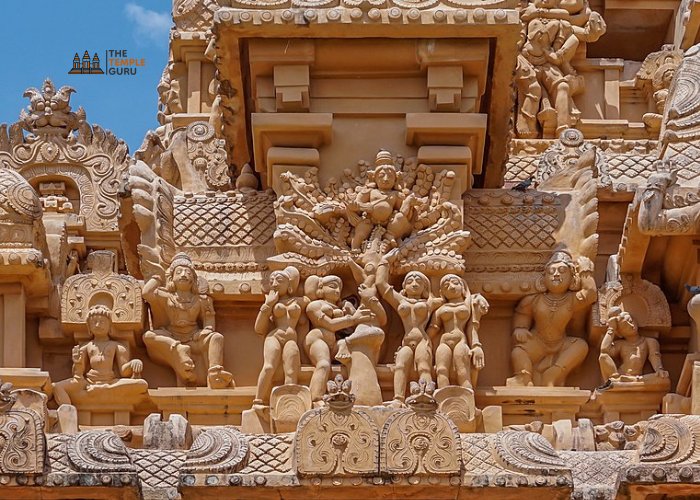
In comparison to other Hindu temples, the temple tower at the entrance is much smaller than the vimana over the sanctum. The inner walls of the temple’s maha mandapa used to have beautiful mural paintings that faded away due to neglect. Some of these murals can be found in the museum’s southern corridor of the temple. Certain areas of the Chola paintings on the walls of the circumambulatory passage have suffered significant damage. Around 400 years ago, the Tanjore Nayak kings replaced them with a few of their paintings. The upper story’s outer wall is carved with 108 Bharathanatyam dance postures, Tamil Nadu’s classical dance.
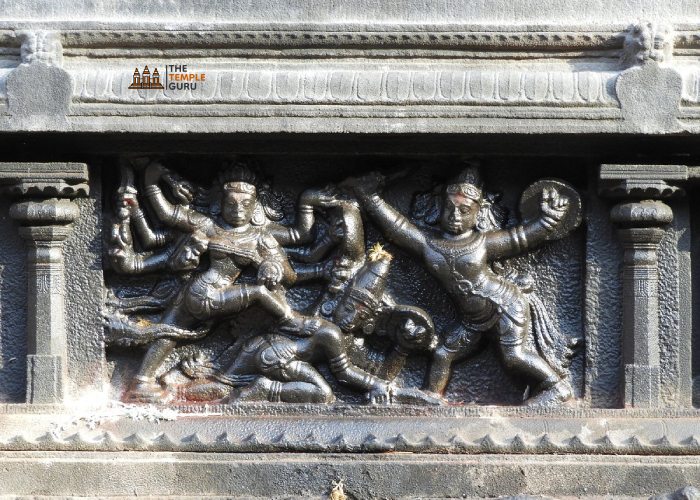
The temple’s inner walls are surrounded by large corridors that house several small shrines. Several hundred bull statues line the upper part of the outer wall. The main entrance faces east, and there are two exits from Antarala, one to the north and one to the south. The complex also houses the shrines of Brihan Nayaki Temple (built by the Pandyas), Subrahmanya Temple (built by the Vijayanagara rulers), and Vinayaka Temple (built by the Maratha rulers). The Thanjavur Nayaks also made several improvements to the shrine. The entire temple structure is made of hard sandstone, which is scarce in Thanjavur, where the temple is located.
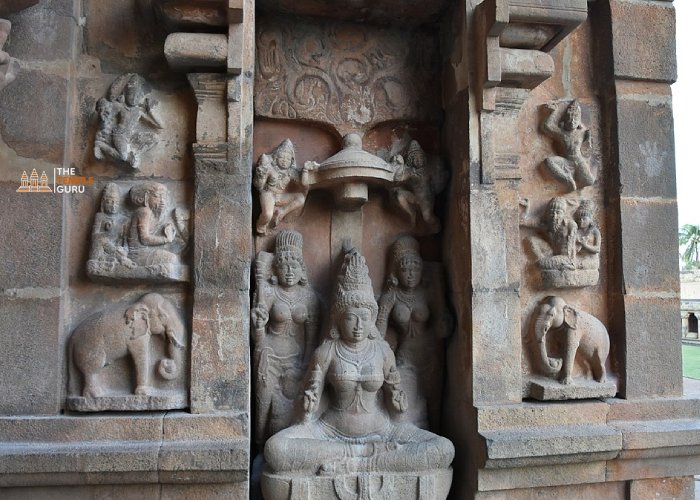
Facts about Brihadeeswara Temple
- Peruvudaiyar Kovil, well known as Brihadeeswarar Temple, RajaRajeshwara, and Rajarajeswaram Temple, was edified by Raja Raja Chola I in the year 1010 AD.
- This ancient shrine is situated in the Thanjavur district in Tamil Nadu.
- Brihadeeswara Temple is a revered temple for Hindus, which they bestow on Lord Shiva (The God of destruction).
- This Brihadeeswara Temple is one of the largest temples in India and one of the supreme brilliance of Indian architecture.
- This temple is a perfect example of the Chola rulers’ great achievements in the field of architecture. It is a tribute to Lord Shiva as well as a display of Raja Raja Chola I’s power.
- Brihadeeswara Temple is surrounded by fortified walls that were most likely added in the 16th century. The vimana (temple tower) is the tallest in the world, standing 216 feet (66 meters).
- The Brihadeeswara Temple has a rounded apex structure that is thought to be made from carving on a single stone.
- There are several shrines added to the temple by most of the following rulers such as the Pandyas, the Vijayanagara rulers, and the Marathas, too.
- The 216-foot-tall tower built above the temple’s Sanctum is the temple’s main attraction. Anyone entering the city from afar can see this flamboyant tower.
- The magnificent Nandi statue built at the temple is another breathtaking thing that will surely stun the visitor; it is about two meters in height, six meters in length, and two-and-a-half meters in width, and weighs around a whopping 20 tonnes for a statue built from a single stone.
- Various postures of the famous classical dance, Bharatanatyam, are meticulously carved on the exterior walls of the temple’s upper story.
Famous Festivals In Temple
- Mahashivratri: The day before the Amavasya (new moon) of each lunar month is called Shivarathri. Mahashivaratri is the most prominent festival celebrated here.
- Deepawali: This festival is celebrated on Amavasya of Karthik month of the Hindu calendar.
- Annual dance festivals around February, around the Mahashivratri.
- Navaratri (Sep/Oct)
- Rajarajan Festival (Nov/Dec) are important festival celebrated in the temple.
Best Time To Visit Temple
All Months, but during Mahashivratri the special arrangement is organized by the Brihadeeswara Temple committee.
How To reach Brihadeeswara Temple
The Brihadeeswara Temple is located in Thanjavur (Tanjore), Tamil Nadu, India.
Nearest Airport: Tiruchirapalli (TRZ) Airport at a distance of nearly 62.7 kilometres from Brihadisvara Temple.
Nearest Railway Station: Thanjavur Junction Railway Station at a distance of nearly 1.4 kilometres from Brihadisvara Temple.
Taxi/Bus Service: Thanjavur can be easily accessed from the nearby cities by bus. Frequent government and private buses are running to Thanjavur throughout the day.
Also, Read – Meenakshi Amman Temple
Support Us
If our content helps you even 1% in gaining information about the temple, please support us by contributing any amount, our UPI ID is - q417999792@ybl Or pay using QR CODE >>> Click Now
Location
Facilities
- Drinking Water
- Pooja Item Shops
- Prasad Shops
- Restaurants Nearby
- Resting Room

